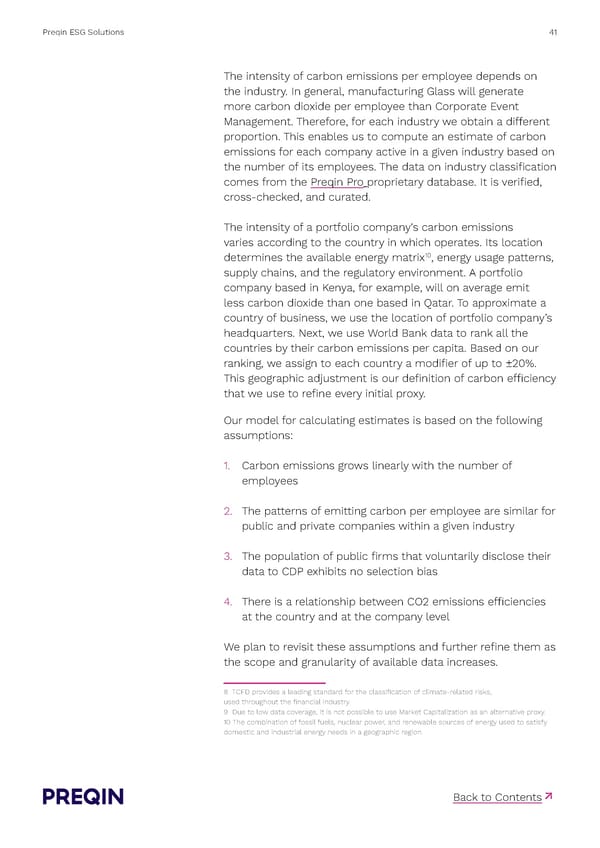Preqin ESG Solutions 41 The intensity of carbon emissions per employee depends on the industry. In general, manufacturing Glass will generate more carbon dioxide per employee than Corporate Event Management. Therefore, for each industry we obtain a di昀昀erent proportion. This enables us to compute an estimate of carbon emissions for each company active in a given industry based on the number of its employees. The data on industry classi昀椀cation comes from the Preqin Pro proprietary database. It is veri昀椀ed, cross-checked, and curated. The intensity of a portfolio company's carbon emissions varies according to the country in which operates. Its location 10 determines the available energy matrix , energy usage patterns, supply chains, and the regulatory environment. A portfolio company based in Kenya, for example, will on average emit less carbon dioxide than one based in Qatar. To approximate a country of business, we use the location of portfolio company’s headquarters. Next, we use World Bank data to rank all the countries by their carbon emissions per capita. Based on our ranking, we assign to each country a modi昀椀er of up to ±20%. This geographic adjustment is our de昀椀nition of carbon e昀케ciency that we use to re昀椀ne every initial proxy. Our model for calculating estimates is based on the following assumptions: 1. Carbon emissions grows linearly with the number of employees 2. The patterns of emitting carbon per employee are similar for public and private companies within a given industry 3. The population of public 昀椀rms that voluntarily disclose their data to CDP exhibits no selection bias 4. There is a relationship between CO2 emissions e昀케ciencies at the country and at the company level We plan to revisit these assumptions and further re昀椀ne them as the scope and granularity of available data increases. 8 TCFD provides a leading standard for the classi昀椀cation of climate-related risks, used throughout the 昀椀nancial industry. 9 Due to low data coverage, it is not possible to use Market Capitalization as an alternative proxy. 10 The combination of fossil fuels, nuclear power, and renewable sources of energy used to satisfy domestic and industrial energy needs in a geographic region. ↗ Back to Contents
 Preqin ESG Solutions Methodology Page 40 Page 42
Preqin ESG Solutions Methodology Page 40 Page 42